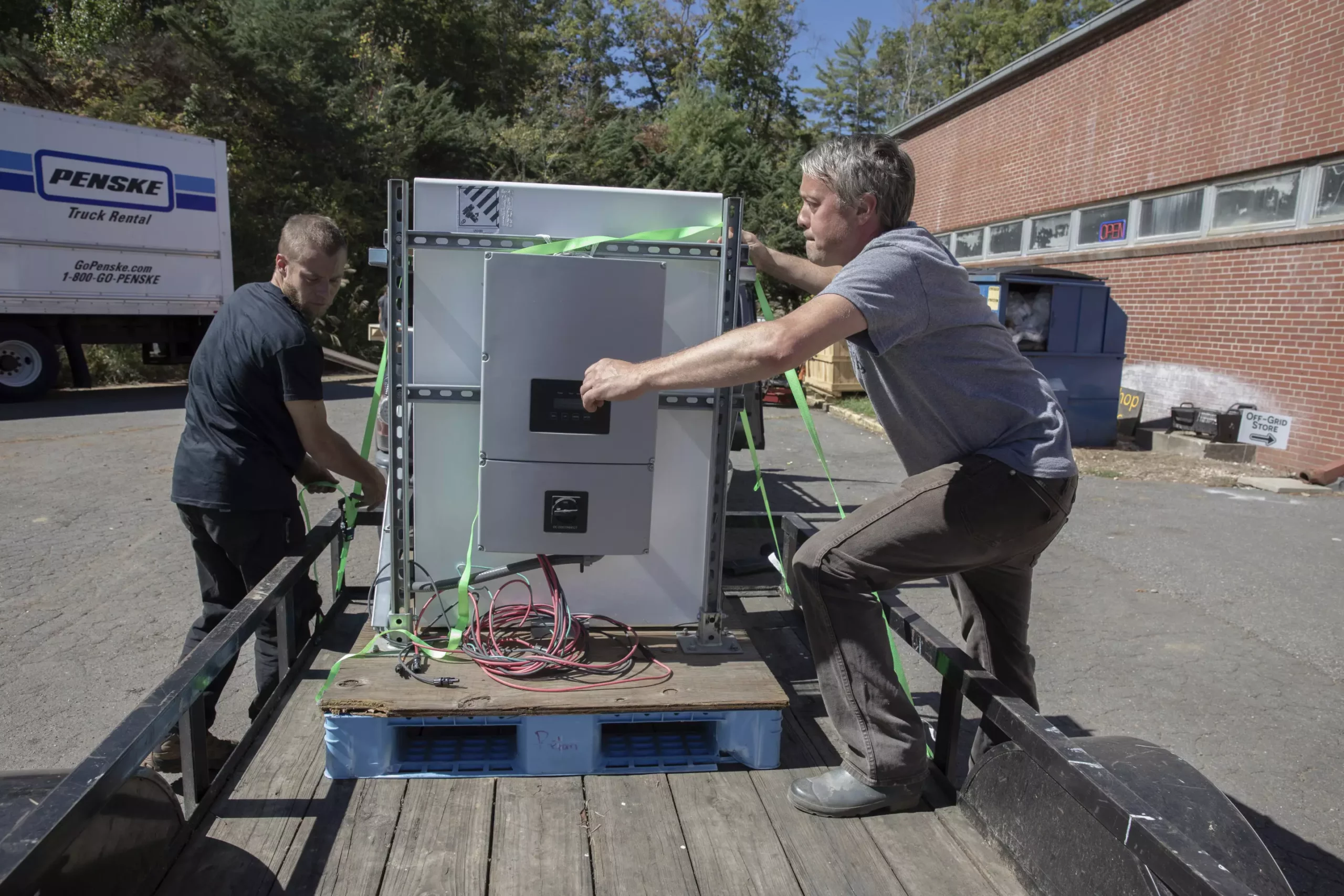In the wake of Hurricane Helene, the picturesque yet rugged terrain of North Carolina’s mountains has transformed into a battleground against nature’s fury. Bobby Renfro, a retired railroad worker, epitomizes the resilience and struggle of many residents in Tipton Hill, a secluded corner nestled within the Pisgah National Forest. Nearly two weeks after the storm wreaked havoc, the whirring sound of a gas-powered generator has become a painful reminder of the lengths to which these communities must go to maintain a semblance of normalcy. Renfro’s resource hub, repurposed from an old church, stands as a beacon of hope amid despair, but he faces a harsh reality: the cost of survival is exorbitant. “It’s going to be a long ordeal,” he reflects, voicing a sentiment shared by thousands still enduring extended power outages.
With around 43,000 residents still without electricity, the aftermath of Helene is overwhelming. The most immediate and dire consequences include the inability to store life-saving medications, operate essential medical devices, or even enjoy the basic comforts of modern living—like recharging cell phones or accessing clean water. In an area already challenged by its geography, the hurricane has compounded difficulties, rendering roads and bridges unusable and leaving people disconnected from critical support systems.
The response efforts to restore power are staggering. Crews from across the United States, alongside Duke Energy and local electric cooperatives, battle the elements to rebuild what was lost. Kristie Aldridge, a spokesperson for North Carolina Electric Cooperatives, notes the challenge: “They’re not just fixing things; they’re rebuilding from scratch.” Infrastructure repair in densely wooded areas is considered slow and labor-intensive, often leading to a frustrating stasis for those in need.
In the interim, many residents have turned to gas and diesel-powered generators, a temporary solution fraught with its challenges. The scarcity of fuel, combined with environmental concerns regarding generator emissions, adds to the trauma. As the weeks stretch on, the wear and tear of these machines—designed for brief emergencies, not long-term outages—places additional stress on already fatigued households.
Fortunately, not all news is bleak. The arrival of clean energy solutions offers a ray of hope. Renfro has recently been equipped with a solar generator courtesy of the Footprint Project, a nonprofit committed to sustainable, clean energy responses in disaster-stricken areas. This new arrangement, consisting of six solar panels and a dependable battery system, heralds a shift toward self-sufficiency. The installation signifies more than just a power source. For the community, it represents a renewed sense of agency; the knowledge that they can harness sunlight—a resource that’s abundant in nature—provides a psychological as well as practical benefit.
The Footprint Project, established in 2018 and led by husband-and-wife duo Will Heegaard and Jamie Swezey, quickly adjusted to the dire needs following Helene’s devastation. Their mission—from mitigating greenhouse gas emissions to responding urgently with renewable energy—expands with every challenge encountered. As Heegaard remarks, their efforts have evolved to be more of a supplement in the short-term crisis rather than a simple replacement of destroyed systems.
What sets this recovery effort apart is the collaboration of volunteers and local residents who come together to maximize resources. The Footprint Project’s mobile units are not just about delivering solar panels and batteries; they’re part of a larger narrative of interconnectedness where each person plays a crucial role. Volunteers from various backgrounds, including glassblowers and solar installers, are stepping up to assist families like that of Julie Wiggins, who runs a community hub that has triaged supplies for about 30 families in need. The power of human connection, mutual aid, and shared resources has illuminated even the darkest of times.
As the days go by, the efforts to support North Carolina’s mountain communities continue, revealing not only the challenges they face but also the indomitable spirit of those who call these lands home. From intricate logistics involving helicopter drops to ensuring the most vulnerable populations have sufficient support, the resilience of the people and organizations involved showcases the profound impact of community-driven recovery.
The long road to recovery post-Hurricane Helene illustrates the ongoing need for sustainable practices in emergency responses. As the Footprint Project and local volunteers extend their efforts, we are reminded that in the face of adversity, innovative thinking paired with community solidarity can create pathways to resilience. While the devastation brought by the hurricane is significant, the emergence of new, clean energy solutions and the unwavering dedication of individuals create renewed hope for the communities affected.


Leave a Reply